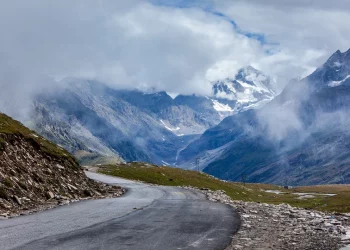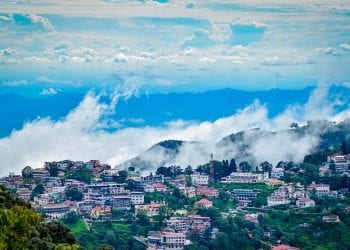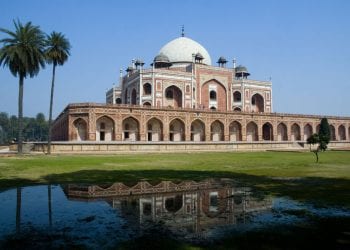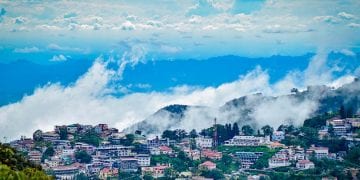Omkareshwar Temple: Complete Guide
The quiet town of Omkareshwar in Madhya Pradesh is a spiritual hub, especially for Shiva devotees across the country. A beautiful riverside pilgrim destination in Madhya Pradesh, ‘Omkareshwar’ means ‘Lord of Omkara’ – one of the Dwadasa Jyotirlinga shrines or the 12 shrines dedicated to Lord Shiva in the form of a Jyotirlinga. Millions of pilgrims visit this small town for the sacred Jyotirlinga at the Omkareshwar temple. Besides its popularity as a pilgrimage center for Hindus, the town is also known for a hanging bridge over the Narmada river called ‘Jhula Phul’ – a splendid sight that serves as a pathway to the Mandhata Temple.
Omkareshwar has plenty of beautiful sights that will soothe the soul of both Shiva devotees and curious travelers. There is an unmistakable serenity in its landscape and a rich cultural heritage that will speak to travelers of all kinds. Here is a guide on how to make the best of your visit to Omkareshwar.
Find Best Hotels In Omkareshwar
Omkareshwar Temple
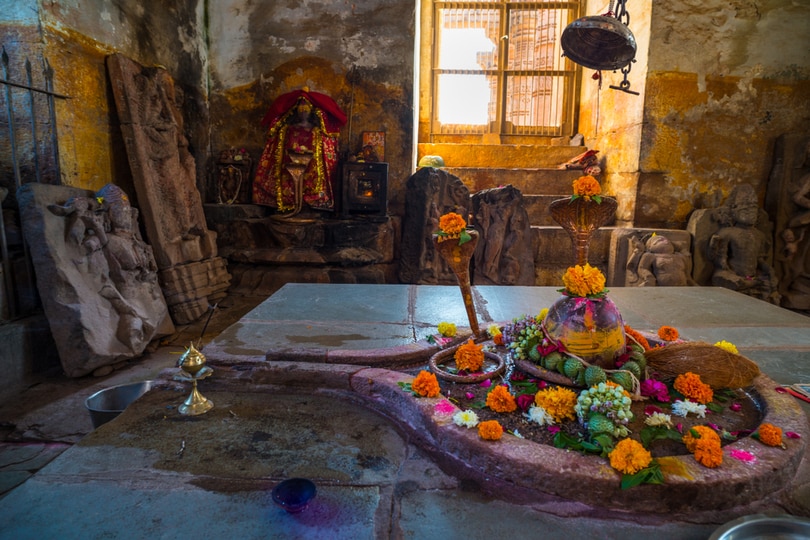
The star of all tourist attractions in the town is undoubtedly the Omkareshwar Temple. It is considered to be one of the holiest shrines in India. One of the revered 12 Jyotirlingas in the country, this beautiful structure stands atop an island called Mandhata in Madhya Pradesh. Surrounding it is the confluence of the mighty Kaveri and Narmada rivers. Further adding to the mystique of the area is the island’s shape, which resembles the sacred Hindu symbol of ‘Om’.
Pilgrims in inconceivable numbers visit the shrine each year to seek the blessings of Lord Shiva. It is a shrine not only for the faithful but for history and archaeology buffs as well. Scattered around the vicinity are around 20 shrines devoted to deities such as Ganesh, Narmada, Shani, and Krishna.
Some Interesting Trivia on Omkareshwar
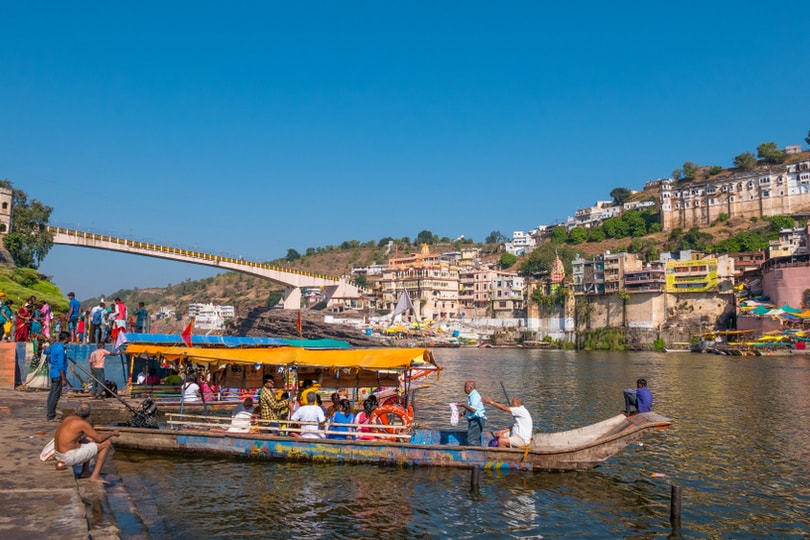
- According to mythology, Omkareshwar is where Lord Shiva chose to rest and sleep each night – also referred to as ‘Shayan.’ The ‘Shayan Arti’ is, therefore, a practice observed religiously at the temple. The temple is considered so sacred that a single visit to Omkareshwar is synonymous with a pilgrimage to the famed Kedarnath and worshipping the Panch Kedars.
- Archaeological findings estimate that the Omkareshwar temple’s Jyotirlinga was initially located in a small ancient temple, around which the existing holy shrine was built.
- The temple survived the onslaught of Mughal invasions in the 11th century. Omkareshwar Temple stood its ground and later rose like a phoenix to become one of the holiest pilgrimage destinations in the country.
Around the Omkareshwar Temple
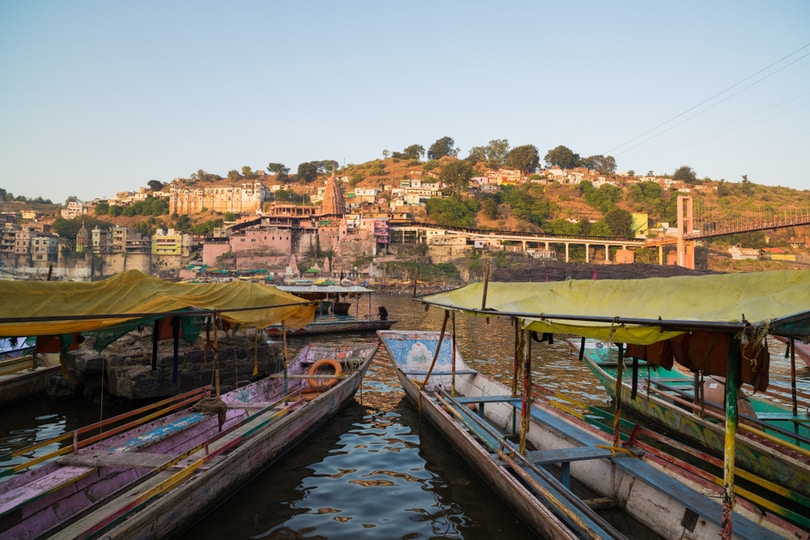
One can cross the ‘Jhula Phul’ to enter the Omkareshwar Temple or take a soothing boat ride across the Narmada towards one of the temple gates. The ideal combination is a boat ride one way and a walk on the way back. A flight of steps from the ghats will lead to the temple. Several flower stalls will greet you before reaching the base of the temple. With intricate carvings in the Nagara style of architecture and artistically-crafted balconies and column carvings, the temple is a lovely sight to behold. Walks around the temple turn out to be beautiful revelations at each of its corners.
The temple comprises a Sabha Mandap (meeting or prayer hall), which stands on 60 towering brownstone pillars that are 14 ft high. These pillars contain elaborate carvings of frieze, as well as a group of figures resembling Satyrs with broad shoulders and meditating foreheads.
With five storeys dedicated to different deities, the temple emanates a sacredness and purity seemingly multiplied five times over. There are three regular Pujas performed in the temple. The temple trust conducts the first one in the morning. The second Puja is presided by the priest of Scindia state, while the priest of the Holkar state performs the third Puja in the evening. The temple is visited regularly by an ocean of pilgrims, especially during major festivals such as Mahashivaratri. One can find devotees bathing in the Narmada or carrying pots full of Narmada water, coconuts, and other items of worship.
Shivalinga
The famous Jyotirlinga at the Omkareshwar Temple is installed on the base floor of the temple and remains immersed in water. Abhishek is performed with milk, curd, and Narmada water three times a day. Located behind the Shivling is an image of Parvati in silver.
In front of the Shivalinga lies a bed laid out for Shiva and Parvati. There’s also a game of Chaupad placed for them to play before they go to sleep.
The temple is also called Omkar Mandhata temple since it was the devotion of Ikshvaku aking Mandhata, that brought the Shivalinga to this location. A ‘gaddi’ that reportedly belonged to him is still visible in the temple premises.
Mandhata Palace
Walk towards the hill at the back of the temple to reach the white walls of the Mandhata Palace, belonging to the powerful Holkar dynasty.
Some parts of the Mandhata Palace are open to the public. Its open corridors are surrounded by pillars and will remind you of a quintessential North Indian Haveli. Walk towards the end to find an elegant and colorful Durbar hall. Its round ceilings are a vision with remains of beautiful glass work.
The views from the Jharokhas or overhanging windows are stunning! Enjoy beautiful vistas of the top of Omkareshwar temple and the waters of the Narmada between deep gorges. It is a perfect vantage point to take in the large size and beauty of the temple, with colorful boats in the distance plying back and forth between the shores of the river.
Mamleshwar Temple
The Mamleshwar temple is one half of the Jyotirlinga at Omkareshwar. It is located on the southern banks of the Narmada. A pilgrimage to Mamleshwar is a must-do while visiting the Omkareshwar temple.
This beautiful temple is located within a walled complex containing seven different temples. It is a site of immense historical significance and protected by the Archaeological Survey of India. With its old-world charm, stone walls, and mysterious allure, Mamleshwar temple is sure to take you back in time. Make sure to visit the interesting Nandi Mandap outside the main temple.
If you’re lucky, you might also catch the unique practice of Lingarchana at Mamleshwar – where a thousand Banlingas placed in concentric circles are worshipped around the main Shivalinga every day.
Omkareshwar Parikrama
A pilgrimage to Omkareshwar Temple is deemed incomplete without having walked the Parikrama or a 16 km circumambulation path that goes around this island. A common practice in most holy shrines, pilgrims not only visit a temple but walk around the sacred Kshetra or region as an absolute sign of devotion. The path around the Kshetra generally takes you around temples, ashrams, and villages.
The Omkareshwar Parikrama is considered to be an easy walk, although a few sections require a bit of a climb up and down. The sacred route passes through Khedapati Hanuman Mandir, Kedareshwar Temple, Omkarnath Ashram, Markanda Ashram with a 12 m image of Sri Krishna, Narmada Ramakrishna Mission Ashram, Kaveri Sangam, Rin Mukteshwar Temple, Dharanraj Dwar, Patali Hanuman temple, Gauri Somnath temple, a giant statue of Shiva, and the Siddhanath temple. The holy Parikrama can also be done by boat if the river is at full tide.
Narmada River
Bringing together the sacred experience at Omkareshwar Temple is its soul – the Narmada River. Her presence is like the universe – omnipotent and essential around Omkareshwar. She surrounds the Mandhata hill on which the main Omkareshwar temple is located. She also connects the two most famous temples – Mamleshwar and Omkareshwar Jyotirlinga.
The waters of the Narmada cut through deep gorges in Omkareshwar. Its ghats are forever brimming with activity as busy little boats ferry people from one end to another. Some boats are vessels of spiritual devotion that take pilgrims for a circumambulation around the island.
It is spiritually fitting that Omkareshwar lies strategically midway between the path of the Narmada from its source at Amarkantak to its final destination near Bharuch in the Arabian Sea. Believed to be the ‘Nabhi Sthal’ or the navel of the river, Omkareshwar is the perfect location to begin and end the Narmada Parikrama. It is a crucial step on the spiritual Narmada Parikrama Journey, even for pilgrims who start from the source.
Guidelines and Suggestions for the Journey to Omkaleshwar
- Photography is not allowed inside the premises of the main Omkareshwar temple. Shutterbugs can shoot to their heart’s content everywhere else on the island.
- While it is possible to make a day trip, we would recommend a night stay to take in the Shayan Arti and morning divinity.
- Pilgrims looking to complete the Parikrama should spend two nights to make the most out of the experience.
- Omkaleshwar is a deeply revered pilgrimage site. Always dress appropriately, don’t speak in loud tones, and respect the temple premises.
Places of Interest Around Omkareshwar

If not pressed for time, visit fascinating sites nearby such as the Kedareshwar Temple, Fanase Ghat, Siddhanath Temple, Gauri Somnath Temple, Kajal Rani Caves, and Sri Govinda Bhagavatpada Cave.
Best Time to Visit
The best season to visit Omkareshwar Temple is the winter. Temperatures are comfortable and conducive to visiting places of interest in and around the Omkareshwar temple. Ideal months to visit are September to March.
How to Get There
By Air: Devi Ahilyabai Holkar Airport (Indore) is the nearest airport from Omkareshwar at a distance of 83 km.
By Train: Omkareshwar has its own railway station, known as the Omkareshwar Road (Mortakka) Railway Station.
By Road: There are frequent bus services that connect Omkareshwar with other parts of the state and country.
Recent Posts
Top Picks

- OYO
 15 April, 2024
15 April, 2024 - Cultural Tour

- OYO
 15 April, 2024
15 April, 2024 - Cultural Tour

- OYO
 15 April, 2024
15 April, 2024 - Cultural Tour

- OYO
 15 April, 2024
15 April, 2024 - Cultural Tour

- OYO
 15 April, 2024
15 April, 2024 - Cultural Tour

Please rotate your device
Please go back to portrait mode for the best experience



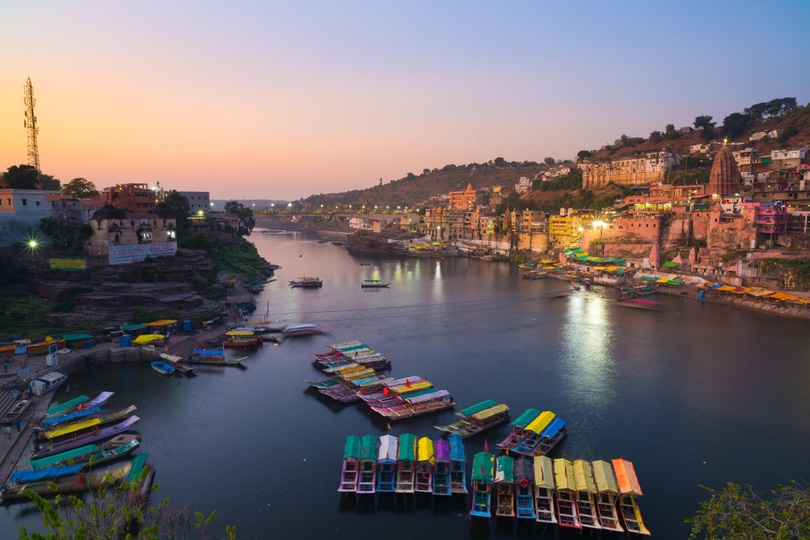

 April 15, 2024
April 15, 2024 